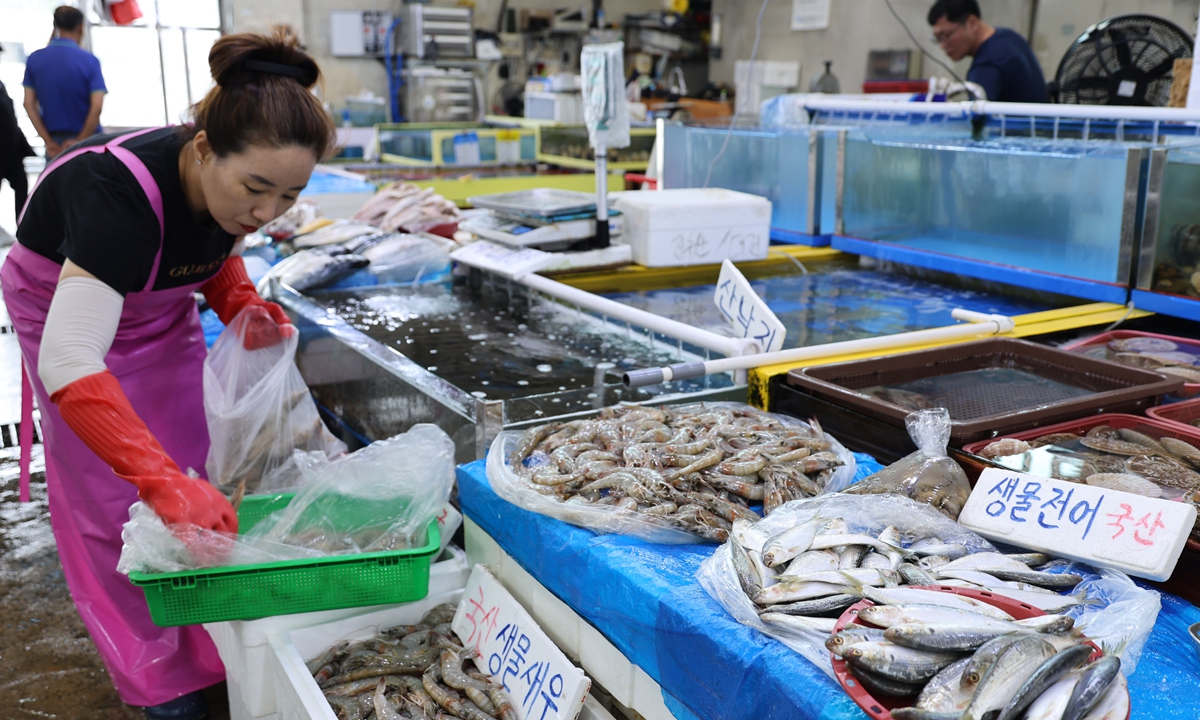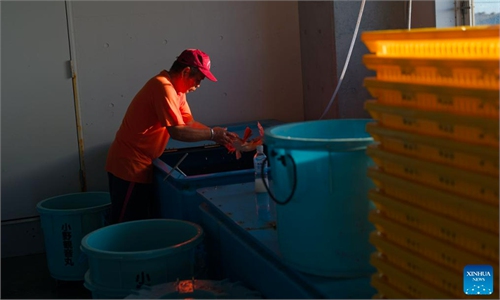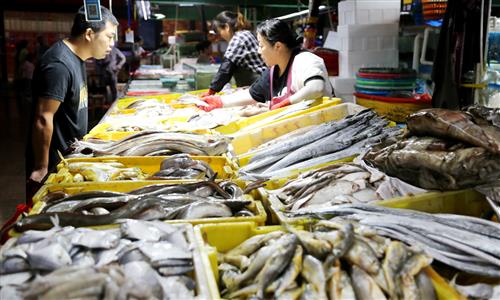South Korea's oyster exports to China nearly triple year-on-year in first 10 months

A South Korean wholesale fishery market Photo: VCG
South Korea's oyster exports to China amounted to $2.7 million (19.55 million yuan) from January to October this year, an increase of nearly three times year-on-year, China Media Group (CMG) reported on Sunday night. The East Asian country's seafood is gaining more and more popularity in China following Japan's dumping of nuclear-contaminated wastewater.
Chinese consumers are seeking new sources of seafood after Japan began dumping the nuclear-contaminated wastewater into the sea, and South Korea is hoping to capture a larger share of its top fishery export market.
South Korea sees Japan's dumping of nuclear-contaminated wastewater as an opportunity, and many South Korean aquatic product companies are looking forward to exporting more to China to fill the market gap left by Japan, an industry insider told Global Times.
China is the largest export market for South Korean fishery products. In 2022, South Korea's fishery exports to China reached $900 million, which is equivalent to South Korea's total exports to the US and Japan, according to the CMG.
There are more South Korean oysters on the market this year, making it much easier for consumers to buy them, a Beijing-based aquatic product dealer surnamed Liang told the Global Times on Monday.
Korean oyster processors are making efforts to move into the Chinese market by improving the competitiveness of their products and developing new products for the Chinese market. Several companies are developing high value-added products such as oyster sausage and oyster steak, according to a report of GMW.cn.
China stopped importing Japanese seafood after Japan began to dump nuclear-contaminated wastewater in August. In September, Japan's exports of aquatic products to China fell by 99.3 percent, with only few ornamental live carp entering the Chinese market. The volume of Japan's main seafood exports such as scallops, salmon and oysters fell to zero, according to media reports.
Several aquaculture bases are being established in China after the exit of Japanese aquatic products from the Chinese market.
In the Qapqal Xibe Autonomous County of Northwest China's Xinjiang Uygur Autonomous Region, a modern high-density aquaculture base with an investment of 120 million yuan is under construction. Using the high-quality water of the Ili River, the base is expected to supply seafood to the broad market of China.


